Are you a beginner gardener with burning questions about how to get started? Look no further! I’m here to help you navigate the basics and turn your thumb green. Whether you’re wondering what plants are easy to grow, how to start seeds indoors, or how to make the most of a small space, I’ve got you covered. In this article, I will provide answers to common beginner gardening questions and offer helpful tips and tricks to get you started on your gardening journey.
Key Takeaways
- Choosing easy-to-grow plants is ideal for beginner gardeners.
- Starting seeds indoors and using grow lights can help maximize plant growth.
- Hardening off plants is important before transitioning them to the outdoors.
- Maximizing limited garden areas is possible with smart planning and creative solutions.
- Finding quality seeds and selecting the right soil are essential for successful gardening.
Gardening is a learning process, and it’s important to experiment, observe, and enjoy the journey. With the right knowledge and guidance, you’ll soon be reaping the rewards of your own bountiful garden.
Starting Out: What Plants are Easy to Grow for Beginners?
If you’re new to gardening, it’s best to start with plants that are known to be beginner-friendly. Here are some foolproof options that will give you a confident start:
- Tomatoes: These versatile plants are relatively easy to grow and can be grown in containers or in the ground. Just make sure to provide them with plenty of sunlight, water, and support as they grow.
- Zinnias: These vibrant and colorful flowers are perfect for beginners. They are resilient, easy to grow from seed, and attract pollinators to your garden.
- Basil: This popular herb is not only delicious but also easy to grow. It thrives in warm weather and can be grown in pots or directly in the ground. Plus, you’ll have fresh basil to use in your favorite recipes!
- Succulents: If you have a tendency to forget to water your plants, succulents are the perfect choice for you. These low-maintenance plants thrive in dry conditions and are incredibly forgiving.
Remember, gardening is a learning process, and it’s okay to make mistakes. Don’t be discouraged if not everything goes according to plan. Take the time to read seed packets, observe how your plants respond to different conditions, and experiment with different varieties. Before you know it, you’ll have a green thumb and a flourishing garden to show for it.
“Gardening is a learning process, and it’s important to experiment, observe, and enjoy the journey.” – Unknown
| Plant | Difficulty Level |
|---|---|
| Tomatoes | Easy |
| Zinnias | Easy |
| Basil | Easy |
| Succulents | Easy |
By starting with these beginner-friendly plants, you’ll gain confidence and experience that will set you up for success as you continue your gardening journey. So roll up your sleeves, get your hands dirty, and enjoy the rewarding process of watching your garden grow!
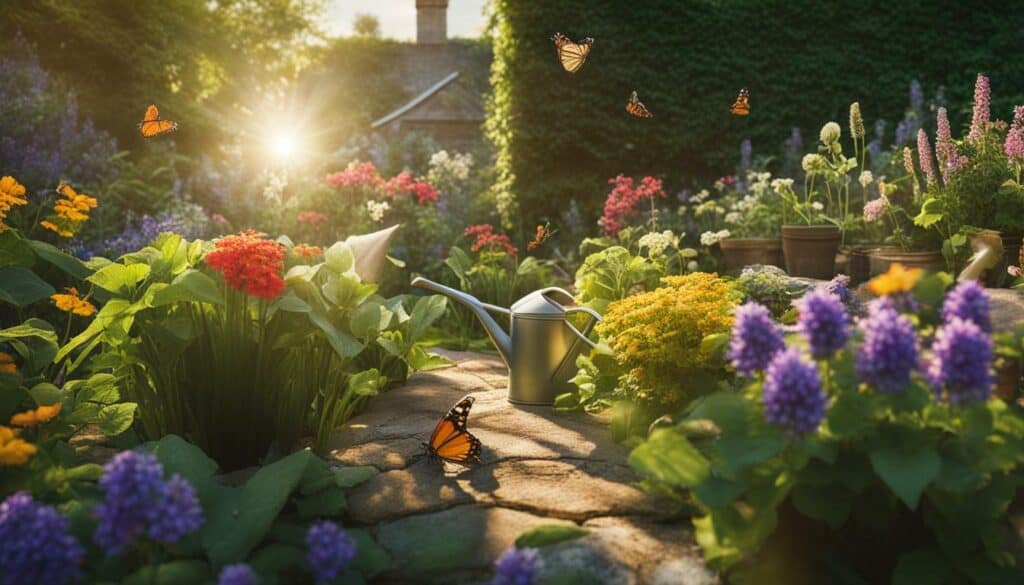
Indoor Gardening: When to Start Seeds Indoors and Using Grow Lights
If you don’t have an outdoor space or want to extend your growing season, starting seeds indoors is a great option. Here’s what you need to know about timing and lighting.
When it comes to starting seeds indoors, timing is crucial. Generally, you should start your seeds indoors 4-6 weeks before the last frost date in your area. This allows the seedlings to grow and develop strong roots before being transplanted outdoors. To determine the last frost date, you can refer to the USDA Plant Hardiness Zone Map or consult with your local extension office.
In addition to timing, providing the right amount of light is essential for successful indoor seed starting. Grow lights are a practical solution to ensure your seedlings receive the necessary light intensity and duration. A good rule of thumb is to provide 14-16 hours of light per day for most seedlings. LED grow lights are energy-efficient and offer a wide spectrum of light that promotes healthy plant growth.
Remember to adjust the height of the grow lights as your seedlings grow to maintain an ideal distance of 2-4 inches between the light source and the top of the plants. This will help prevent leggy, weak stems and encourage compact, sturdy growth.

Table: Recommended Indoor Seed Starting Times
| Plant | Indoor Starting Time (Weeks Before Last Frost Date) |
|---|---|
| Tomatoes | 6-8 weeks |
| Peppers | 8-10 weeks |
| Herbs (Basil, Parsley, etc.) | 6-8 weeks |
| Lettuce | 4-6 weeks |
| Cucumbers | 3-4 weeks |
Starting seeds indoors and using grow lights can greatly enhance your gardening experience. With proper timing and lighting, you’ll be able to nurture healthy seedlings that are ready for a successful transition to the outdoors. Happy gardening!
Hardening Off Plants: Transitioning Seedlings to the Outdoors
Once your indoor seedlings have grown strong and healthy, it’s time to prepare them for the great outdoors. Here’s how to harden off your plants for a successful transition.
Hardening off is the process of gradually acclimating your indoor seedlings to the outdoor environment. This step is crucial to prevent shock and ensure the survival of your plants. To begin, choose a mild day with calm winds to start the hardening off process.
Start by placing your seedlings outdoors in a sheltered spot for a few hours each day, gradually increasing the time spent outside over the course of a week or two. This exposure to natural sunlight, wind, and fluctuating temperatures will help your plants adjust to the outdoor conditions.
During this time, it’s important to closely monitor your seedlings for any signs of stress or damage. If the leaves start to wilt or turn yellow, it may be a sign that they need more time indoors or protection from harsh weather. If necessary, bring them back inside or provide temporary shade until they recover.
| Tips for Hardening Off Plants |
|---|
| Gradually increase the time spent outdoors over a week or two. |
| Choose a mild day with calm winds to start the process. |
| Monitor your seedlings for signs of stress or damage. |
| Provide temporary shade or bring plants indoors if needed. |
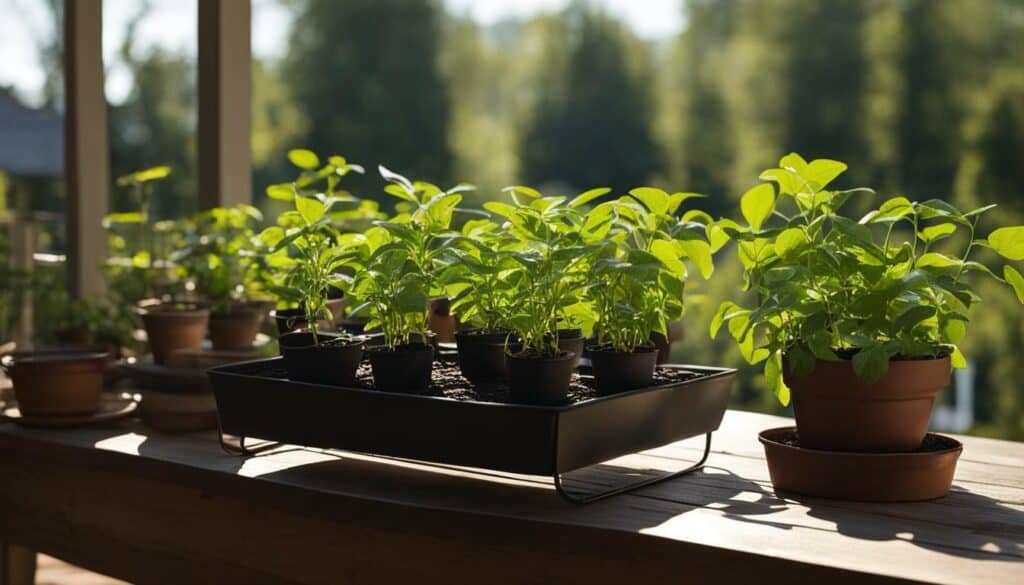
Remember, each plant variety has different hardening off requirements, so it’s always a good idea to reference the specific recommendations on your seed packets or consult gardening resources for guidance. By gradually introducing your seedlings to the great outdoors, you’ll give them the best chance for success in your garden.
Small Space Gardening: Maximizing Your Garden in Limited Areas
Don’t let limited space hold you back from gardening! In this section, I’ll show you creative ways to maximize your gardening potential in small areas. Whether you have a balcony, patio, or a small yard, there are plenty of options for creating a beautiful and productive garden.
One great way to make the most of limited space is by using vertical gardening techniques. Vertical gardens allow you to grow plants upwards, utilizing walls or trellises. This not only saves space but also adds visual interest to your garden. Consider growing vine plants like tomatoes, cucumbers, or beans that can climb up a trellis or fence.
Another space-saving method is container gardening. With containers, you can grow a variety of plants, from herbs and vegetables to flowers and ornamentals. Choose containers of different sizes and heights to create a layered effect, and don’t forget to use vertical space by hanging plants or installing a plant ladder. This way, you can have a flourishing garden even in a compact area.
| Gardening Tip | Image |
|---|---|
| Repurpose everyday items as planters. Use old buckets, mason jars, or even shoe organizers to grow your favorite plants. | 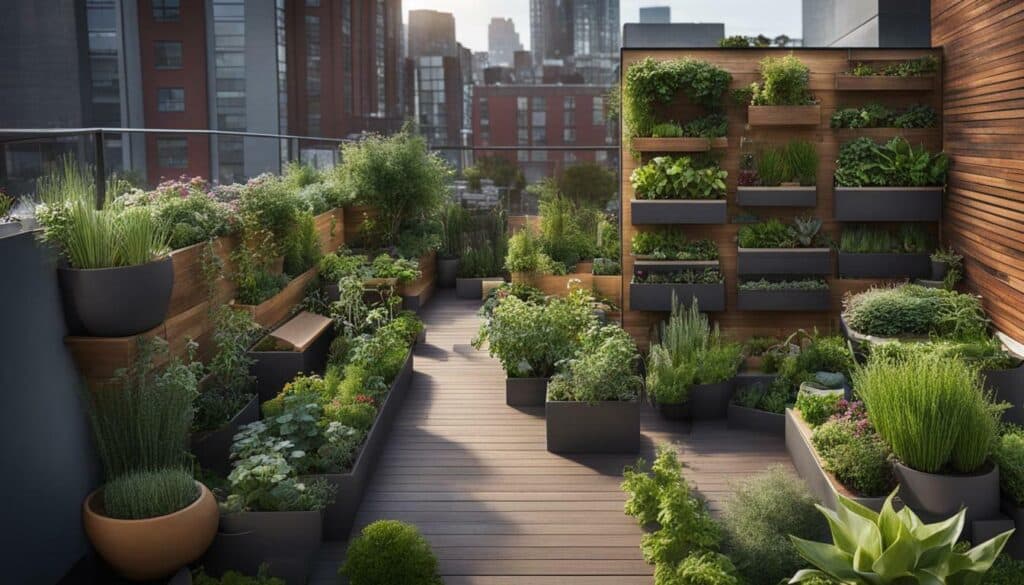 |
| Grow herbs and vegetables in hanging baskets. Hang them from sturdy hooks or a wall-mounted rack for easy access and a green touch to your space. |  |
| Utilize window boxes or railing planters to add a splash of color to your balcony or porch. Plant vibrant flowers or trailing vines for a stunning display. |  |
Lastly, don’t forget to utilize every inch of your limited space. Consider adding hanging pockets or shelves on walls for additional planting space. You can also create a vertical herb garden by attaching small pots to a wooden pallet or using hanging mason jars.
Remember, gardening in small spaces is all about being creative and thinking outside the box. By implementing these ideas and maximizing the use of available space, you can enjoy the rewards of a flourishing garden no matter how limited your area may be.
Sourcing Seeds: Where to Find and How to Choose the Right Ones
Ready to start sowing seeds? Before you dig in, let’s explore where you can find the best seeds for your garden and how to choose the right ones. As a beginner gardener, it’s important to start with high-quality seeds to ensure the best chance of success.
When it comes to sourcing seeds, there are a few options to consider. One popular choice is to visit your local garden center or nursery. They often carry a wide variety of seeds, including both common and unique plant varieties. The benefit of buying seeds in person is that you can see and touch the packets, read the descriptions, and get advice from knowledgeable staff.
Online Options
If you prefer the convenience of shopping from home or have trouble finding specific seeds locally, online seed companies are a great alternative. Many reputable companies offer a wide selection of seeds, including heirloom and organic options. These companies often provide detailed descriptions, growing tips, and customer reviews to help you make informed choices.
Before making a purchase, consider the following factors to choose the right seeds for your garden:
- Plant Type: Determine whether you want to grow vegetables, herbs, flowers, or a combination. Different seed companies specialize in specific plant types, so choose a supplier that aligns with your gardening preferences.
- Seed Quality: Look for seeds that have a high germination rate and are free from disease or damage. Reputable seed companies will provide this information on their packaging or website.
- Growing Conditions: Consider your local climate and growing conditions. Some seeds are better suited for specific regions or require certain temperature ranges for successful germination and growth.
- Organic and Non-GMO: If you prefer organic or non-genetically modified (non-GMO) seeds, make sure the company you choose clearly labels their seeds as such.
Now that you know where to find quality seeds and how to choose the right ones, you’re ready to kick-start your gardening journey. Remember, every seed holds the potential for growth and beauty, so don’t be afraid to try new varieties and experiment in your garden. Happy sowing!
| Benefits of Buying Seeds Locally | Benefits of Buying Seeds Online |
|---|---|
| Opportunity to see and touch the packets | Wide selection of plant varieties |
| Access to knowledgeable staff for advice | Convenience of shopping from home |
| Supporting local businesses | Detailed descriptions and customer reviews |
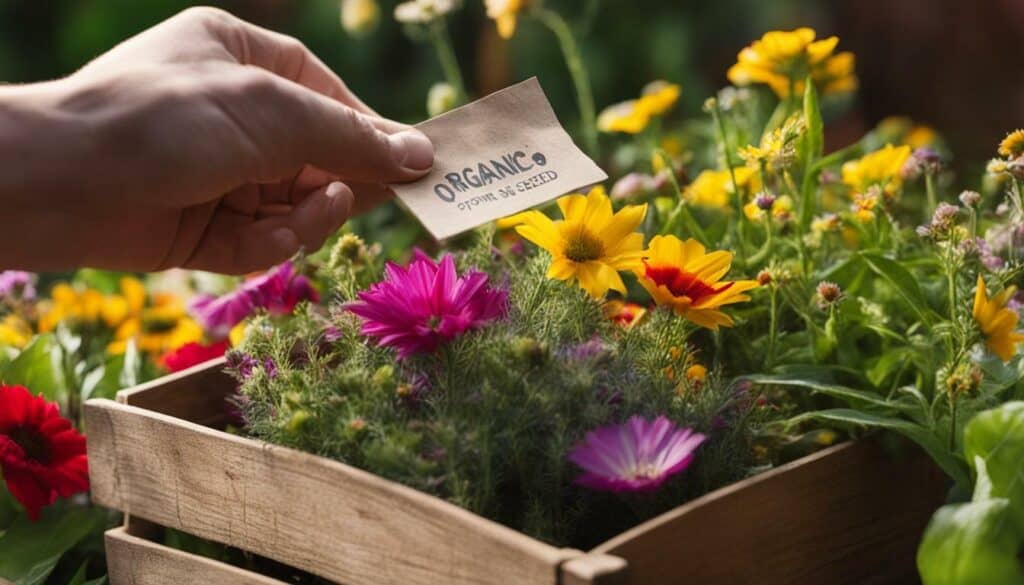
Soil Matters: Prepared Soil vs. Making Your Own
One of the key factors in successful gardening is having the right soil. In this section, we’ll compare prepared soil options with making your own, so you can decide what suits your needs best.
Prepared soil, also known as potting mix or garden soil, is a convenient option for beginner gardeners. It is a pre-mixed blend of various organic materials, such as compost, peat moss, and perlite. Prepared soil is formulated to provide optimal drainage, moisture retention, and nutrient levels for different types of plants. It saves time and effort since you don’t have to gather and mix the ingredients yourself. This option is great for those who want to start gardening immediately without extensive preparation.
On the other hand, making your own soil allows you to have full control over its composition. It gives you the freedom to customize the soil mix based on the specific needs of your plants. Making your own soil can be more cost-effective in the long run, especially if you have access to free or low-cost organic materials like compost or leaf mold. Additionally, creating your own soil mix can be a rewarding and educational experience, helping you deepen your understanding of soil composition and its impact on plant growth.
Table: Comparison of Prepared Soil vs. Making Your Own
| Prepared Soil | Making Your Own |
|---|---|
| Convenient and ready to use | Allows customization for specific plant needs |
| Consistent quality and nutrient content | Opportunity to experiment and learn |
| Time-saving | Potentially more cost-effective |
| Limited control over ingredients | Requires gathering and mixing materials |
Quote: “Whether you choose prepared soil or make your own, the key is to ensure that the soil is well-draining, rich in nutrients, and suitable for the specific plants you intend to grow.” – Expert Gardener
In summary, the choice between prepared soil and making your own depends on your gardening goals, preferences, and available resources. Both options have their advantages and considerations. Whether you’re a beginner or an experienced gardener, the most important thing is to provide your plants with the right soil conditions for healthy growth and productivity.
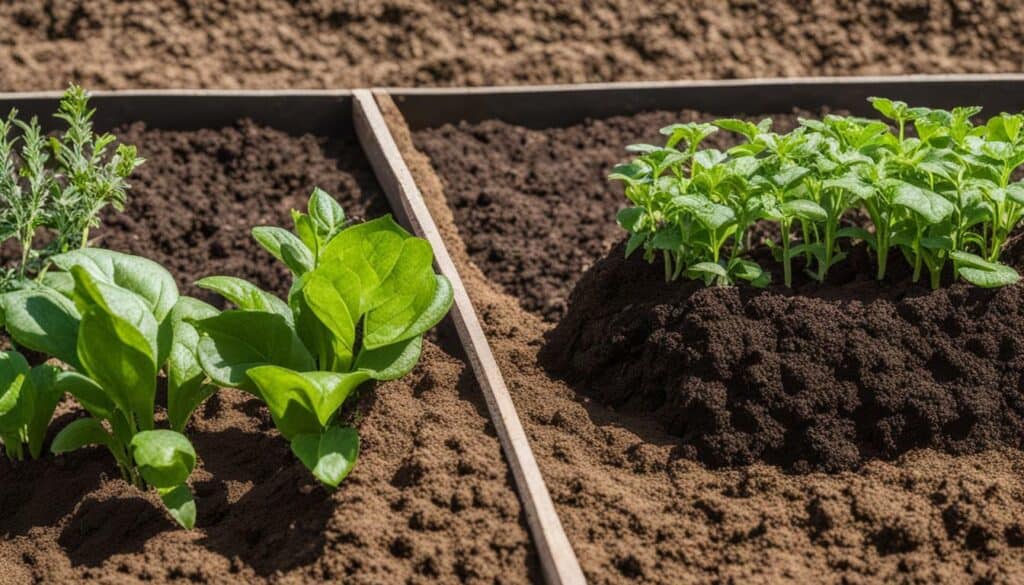
Common Mistakes to Avoid: Proper Plant Spacing, Planting Times, and Location
Even the most experienced gardeners make mistakes, but being aware of common pitfalls can save you time and frustration. Let’s explore some major missteps to avoid when starting your garden.
1. Improper Plant Spacing: Overcrowding your plants can lead to competition for nutrients, water, and sunlight, resulting in stunted growth and increased susceptibility to diseases. Be sure to follow the spacing recommendations provided on seed packets or plant labels to give your plants ample room to thrive.
2. Planting at the Wrong Times: Timing is crucial in gardening. Planting too early or too late in the season can negatively impact your plants’ growth and productivity. Consult a gardening calendar or local extension office to determine the ideal planting dates for your region.
Pro tip:
“Proper research and planning will help you choose the correct location for your garden.”
3. Choosing the Wrong Location: Sunlight is essential for plant growth. Select a spot in your garden that receives at least six hours of direct sunlight per day. Avoid areas with excessive shade or locations that are prone to strong winds, as these can adversely affect your plants.
4. Not Knowing How to Read a Seed Packet: Seed packets contain valuable information that can guide you in successful gardening. Take the time to read and understand the instructions provided, including recommended planting depth, spacing, and any specific requirements for that particular plant.
By avoiding these common mistakes, you’ll set yourself up for gardening success. Remember, gardening is a journey of learning and experimentation. Don’t be afraid to try new things, observe your plants’ needs, and enjoy the process. Happy gardening!
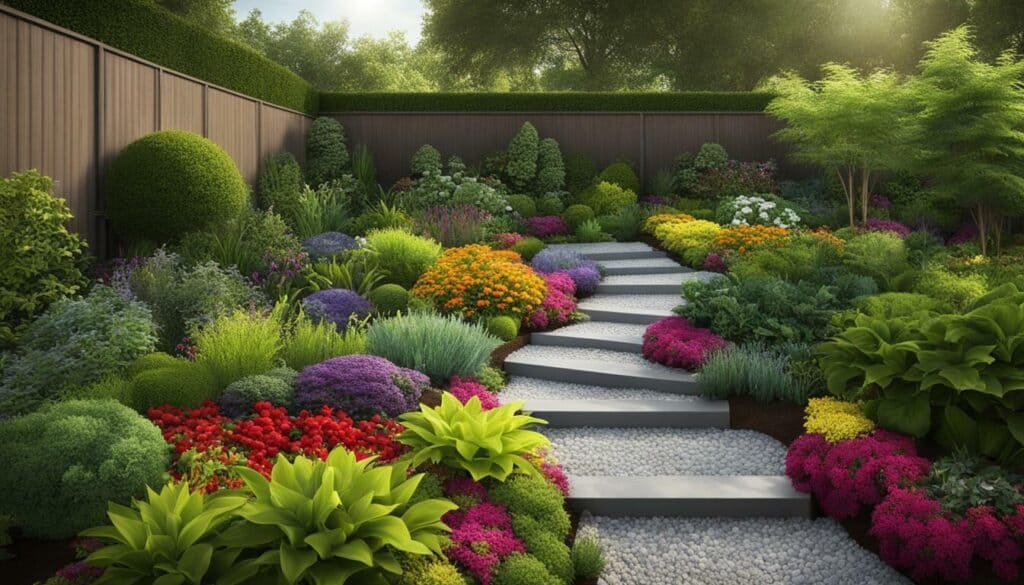
Seeds vs. Transplants: Which is Right for You?
When it comes to growing your garden, you have two main choices: starting from seeds or buying transplants. Let’s dive into the factors that can help you make the right decision.
Cost: One of the primary considerations when choosing between seeds and transplants is cost. Seeds tend to be more affordable, especially if you plan to grow a large number of plants. However, transplants may be a better option if you only want a few plants or if you’re short on time.
Variety: If you’re looking for a wide variety of plant options, seeds are the way to go. Seed catalogs offer an extensive selection of different plant varieties, allowing you to experiment and find the perfect plants for your garden.
| Seeds | Transplants |
|---|---|
| Less expensive | Convenient and time-saving |
| Wide variety of options | Immediate planting and faster results |
| Greater control over the growing process | Reduced risk of failure |
| Requires more time and patience | Less room for experimentation |
Control: Starting from seeds allows you to have greater control over the entire growing process. From selecting the seed varieties to nurturing the plants from their earliest stages, you can shape your garden exactly the way you envision it. On the other hand, transplants provide a more convenient option with less room for error, especially if you’re new to gardening.
Ultimately, the choice between seeds and transplants depends on your preferences, budget, and level of gardening experience. Consider the factors discussed above and make an informed decision that suits your needs. Happy gardening!
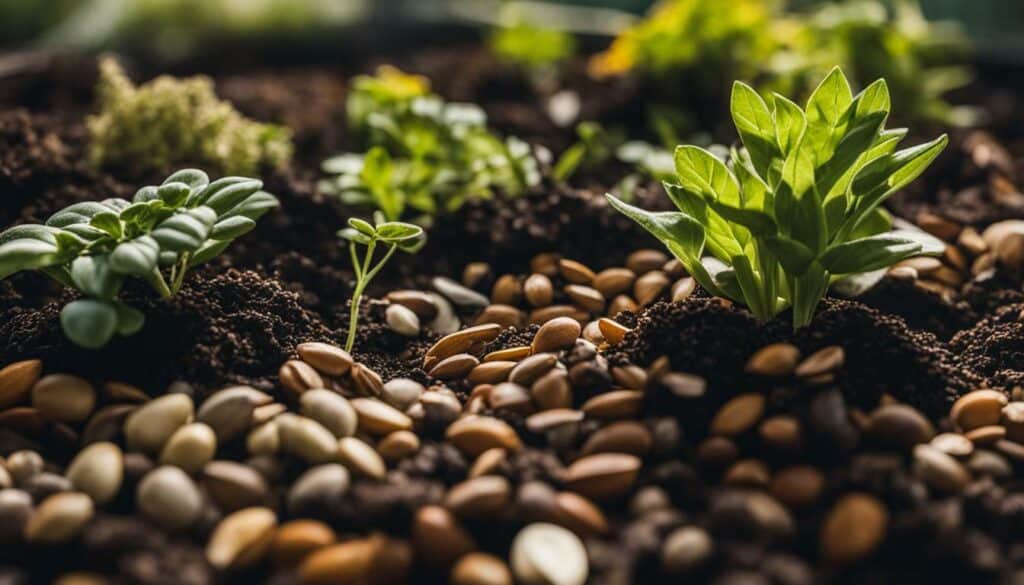
Gardening Basics: Knowing Your Garden Size and Depth
Before you start planting, it’s crucial to know the size and depth of your garden. In this section, we’ll cover how to measure your space and ensure you make the most out of it.
To determine the size of your garden, grab a measuring tape and measure the length and width of the area you plan to use for gardening. It’s important to have accurate measurements, as this will help you determine how many plants you can fit and how much space each plant will need to thrive. Once you have the measurements, jot them down for future reference.
Next, let’s talk about the depth of your garden. The depth refers to the amount of soil your plants will have to grow their roots. Most plants require a depth of at least 6-8 inches, but some varieties, like tomatoes or root vegetables, may need deeper soil. Take into consideration the specific requirements of the plants you intend to grow and ensure that your garden beds or containers are deep enough to accommodate them.
| Garden Size | Garden Depth |
|---|---|
| Small | 6-8 inches |
| Medium | 8-12 inches |
| Large | 12+ inches |
Understanding the dimensions of your garden will help you plan effectively and maximize your gardening potential. By knowing the size and depth of your garden, you can determine how many plants to buy, how to space them properly, and how much soil to prepare. Remember, gardening is a learning process, and observing your plants and making adjustments along the way is part of the fun. Happy gardening!
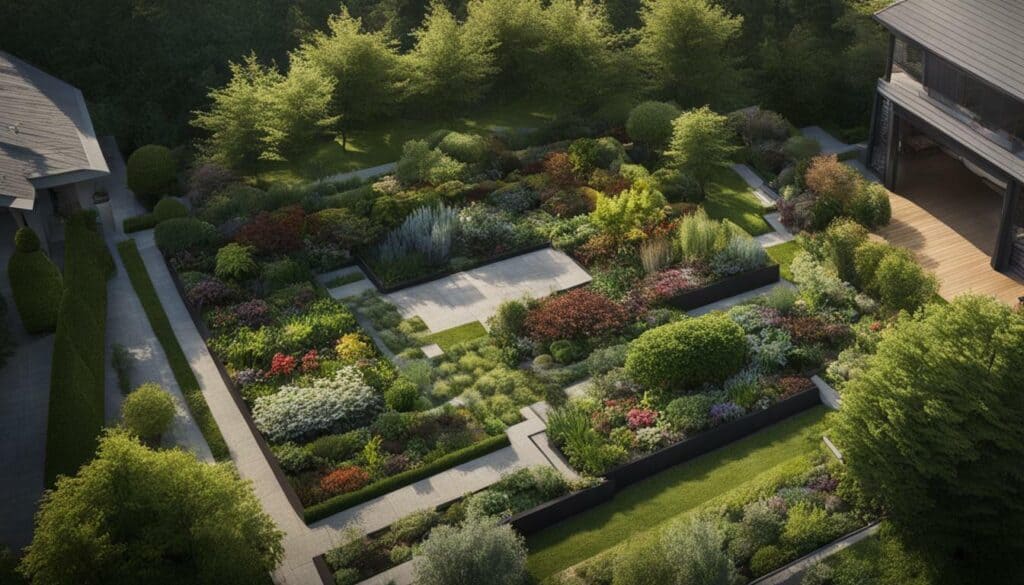
Conclusion
Congratulations on making it to the end of this beginner gardening guide! Remember, gardening is a learning process, so don’t be afraid to get your hands dirty, learn from your mistakes, and have fun along the way.
During your gardening journey, you may have questions about what plants are easy to grow for beginners, when to start seeds indoors, and whether you need a grow light. You might also wonder how to harden off your plants and transition them to the outdoors, or how to make the most of limited garden areas.
Knowing where to find quality seeds, choosing the right soil, and avoiding common mistakes like improper plant spacing, planting at the wrong times, or selecting the wrong location are important factors to consider. Additionally, deciding between starting from seeds or purchasing transplants and understanding the size and depth of your garden are key elements to successful gardening.
Always remember that gardening is a journey of experimentation and observation. Take the time to enjoy the process and discover what works best for you and your garden. Whether you’re planting flowers in spring or starting a container garden with seeds, embrace the learning experience and have confidence in your ability to nurture and cultivate beautiful plants.
What Are Some Expert Tips to Boost my Green Thumb as a Beginner Gardener?
Looking to develop a green thumb as a novice gardener? Start by ensuring your garden has proper soil preparation and good drainage. Choose the right plants for your climate and provide them with adequate sunlight and water. Regularly weed and prune to keep your garden healthy and thriving. Learning about companion planting and organic fertilizers can also help your garden grow beautifully.
FAQ
Q: What plants are easy to grow for beginners?
A: Some easy-to-grow plants for beginners include herbs like basil and mint, leafy greens like lettuce and spinach, and flowers like marigolds and zinnias.
Q: When should I start seeds indoors and do I need a grow light?
A: The timing for starting seeds indoors depends on the specific plant, but a general rule is to start 4-6 weeks before the last frost date. Grow lights can be beneficial for providing adequate light to seedlings.
Q: How do I harden off plants and transition them to the outdoors?
A: To harden off plants, gradually expose them to outdoor conditions over a period of 7-10 days, starting with a few hours of sunlight and gradually increasing the time and intensity.
Q: How can I maximize my garden in a small space?
A: In small spaces, consider vertical gardening, using containers and raised beds, and choosing compact varieties of plants. Utilize wall space and make use of hanging baskets or trellises.
Q: Where can I find seeds and how do I choose the right ones?
A: You can find seeds at local garden centers, online seed suppliers, or even save seeds from your own plants. When choosing seeds, consider your climate, space limitations, and personal preferences.
Q: Should I use prepared soil or make my own?
A: Both options have their benefits. Prepared soil offers convenience and a consistent mix, while making your own allows for customization and can be more cost-effective. Consider your needs and budget when deciding.
Q: What are common mistakes to avoid in gardening?
A: Common mistakes include improper plant spacing, planting seeds at the wrong time of year, choosing the wrong location for your garden, and not knowing the size and depth of your garden.
Q: Should I start with seeds or transplants for my garden?
A: Whether to start with seeds or transplants depends on your preferences, time, and resources. Seeds offer a wider variety, while transplants provide a head start. Consider factors like growing season length and plant availability.
Q: How do I know the size and depth of my garden?
A: Measure the dimensions of your garden plot using a measuring tape or yardstick. Understanding the size and depth will help determine the number of plants and the spacing needed for optimal growth.
Q: How do I read a seed packet and what information does it provide?
A: Seed packets contain important information such as planting instructions, days to germination, and days to maturity. They also provide details on sun and water requirements, plant height, and whether they are annuals or perennials.
Q: What can I do to keep rodents out of my garden?
A: Set up physical barriers like fences or netting to deter rodents. You can also use natural deterrents like planting strong-smelling herbs, spraying predator urine, or using sonic devices.
Q: How do I start a container garden with seeds?
A: Fill containers with well-draining potting soil, plant seeds according to the packet instructions, and provide adequate water and sunlight. Monitor the moisture levels and transplant seedlings as needed.
Q: What flowers should I plant in spring and when should I start planting vegetable seeds?
A: For spring flowers, popular choices include daffodils, tulips, and pansies. Vegetable seeds should be started indoors 4-12 weeks before the last frost date, depending on the specific plant.
Remember, gardening is a learning process, so don’t be afraid to experiment, observe, and enjoy the journey!

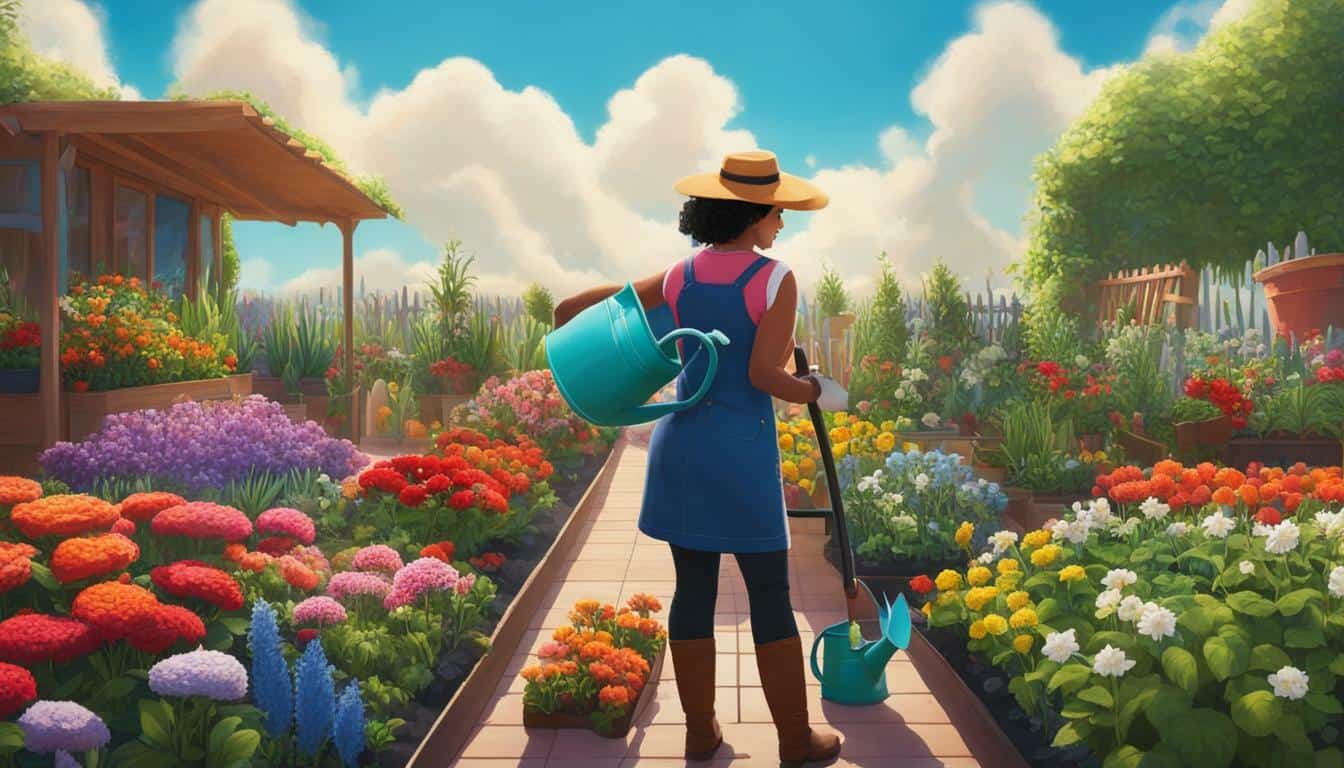



Leave a Reply